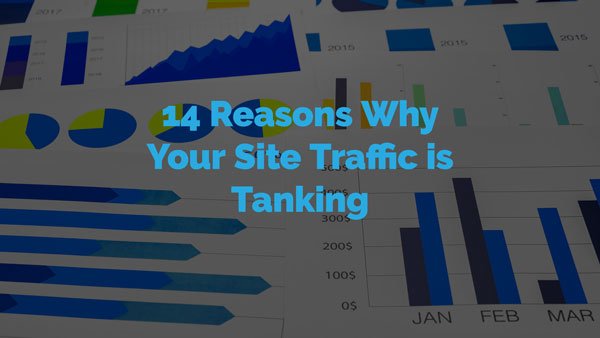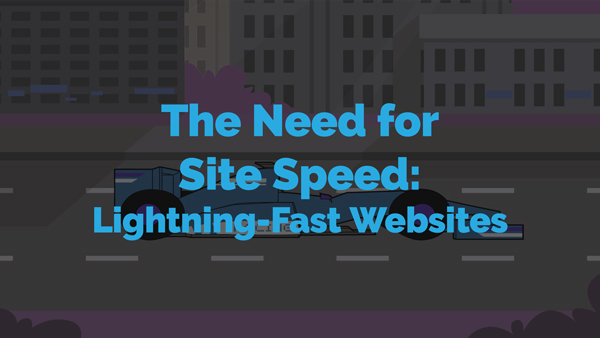You’ve been putting in the time and effort to drive traffic to your website, but suddenly you notice a sharp drop. What’s going on? Don’t panic, it happens to the best of us. There are many reasons why your site traffic may have dropped, from technical issues to changes in search engine algorithms. In this article, we’ll dive into 14 possible reasons why your site traffic has taken a hit, and what you can do to get it back on track. So grab a cup of coffee and let’s get to the bottom of this!

1. Google algorithm updates
Google is continually updating its search algorithms to improve the quality of search results for users. If you’ve noticed a drop in traffic, it could be because your site’s content is no longer optimised for Google’s algorithm.
Action: To rectify this, you can work on improving your site’s SEO by adding relevant keywords, optimizing meta descriptions, and improving site speed.
2. Technical issues
Technical issues such as broken links, slow loading times, and server downtime can negatively impact your site’s traffic.
- Broken links
Broken links occur when a link on your site leads to a page that no longer exists or has been moved. Broken links can negatively impact user experience, and users may leave your site if they encounter too many broken links.
Action: Regularly check your site for broken links and take corrective actions to fix them. You can use tools such as Google Search Console to identify broken links on your site.
- Slow loading times
Slow loading times can negatively impact user experience and result in a drop in traffic. Regularly monitor your site’s loading times and take corrective actions to improve them. You can use tools such as Google PageSpeed Insights to identify the factors that are contributing to slow loading times and take corrective actions accordingly.
Action: Some actions you can take to improve site speed include optimising images, minimising HTTP requests, and using a content delivery network (CDN).
- Server downtime
Server downtime occurs when your site is not accessible to users due to server issues. Server downtime can result in a significant drop in traffic and revenue.
Action: Regularly monitor your site’s uptime and take corrective actions to ensure that your site is always accessible to users. You can use tools such as UptimeRobot to monitor your site’s uptime and receive notifications when your site goes down.
3. Mobile-unfriendly design
As more people access websites on their mobile devices, having a mobile-friendly design is crucial for maintaining site traffic. If your site is not optimised for mobile, users will likely leave your site quickly, resulting in a drop in site traffic.
Action: Work on improving your site’s mobile responsiveness to keep your mobile visitors engaged.
4. Content quality
High-quality content is essential for driving traffic to your site. Poorly written or irrelevant content can result in a drop in traffic as users may quickly leave your site.
Action: Regularly update your site’s content and ensure that it’s informative, engaging, and relevant to your audience. Consider adding a blog.
5. Competition
Competition is fierce in almost every industry, and if your competitors are outranking you, your traffic will likely suffer.
Action: Monitor your competitors’ strategies and work on improving your site’s SEO, content, and marketing efforts to stay ahead of the competition.
6. Outdated design
An outdated design can make your site look unprofessional, resulting in a drop in traffic.
Action: Consider updating your site’s design to improve its visual appeal and user experience.
7. Social media changes
Changes in social media algorithms can impact your site’s traffic, especially if you rely heavily on social media for traffic.
Action: Diversify your traffic sources and focus on building a robust email list to reduce your dependence on social media.
8. Content duplication
Duplicate content can negatively impact your site’s SEO, resulting in a drop in traffic.
Action: Use tools such as Copyscape to check for duplicate content and take corrective actions such as rewriting or deleting duplicate content.
9. Changes in user behaviour
Changes in user behaviour can impact your site’s traffic, especially if your site’s content or design is not aligned with users’ preferences.
Action: Monitor user behaviour regularly and make changes to your site’s content and design to align with their preferences.
10. Google penalties
Google penalties can result in a significant drop in traffic to your site. If you’ve noticed a drop in traffic, check if your site has been penalised by Google and take corrective actions to rectify the situation.
11. Changes in search intent
Changes in search intent can impact your site’s traffic, especially if your site’s content is no longer relevant to users’ search queries.
Action: Monitor changes in search intent and update your site’s content accordingly.
12. Lack of promotion
Lack of promotion can result in a drop in traffic as users may not be aware of your site’s existence.
Action: Invest in marketing efforts such as social media advertising, influencer marketing, and email marketing to drive traffic to your site.
13. Changes in industry trends
Changes in industry trends can impact your site’s traffic, especially if your site is not keeping up with the latest trends.
Action: Stay up-to-date with industry trends and make changes to your site’s content and design to align with them.
14. Seasonal changes
Seasonal changes can impact your site’s traffic, especially if your site’s content is not relevant to the current season.
Action: Adjust your site’s content and marketing efforts to align with seasonal changes and ensure that your site remains relevant to your audience.
Conclusion
In conclusion, a sudden drop in website traffic can be alarming, but it’s important to stay calm and methodically investigate the potential causes. By taking action and implementing the strategies we’ve outlined in this article, you can work towards identifying the issue and taking steps to remedy it. Remember, maintaining a healthy flow of traffic to your website is key to your online success, so don’t let a drop in site traffic discourage you. Stay vigilant, stay proactive, and keep striving to improve the user experience on your website. Good luck!






